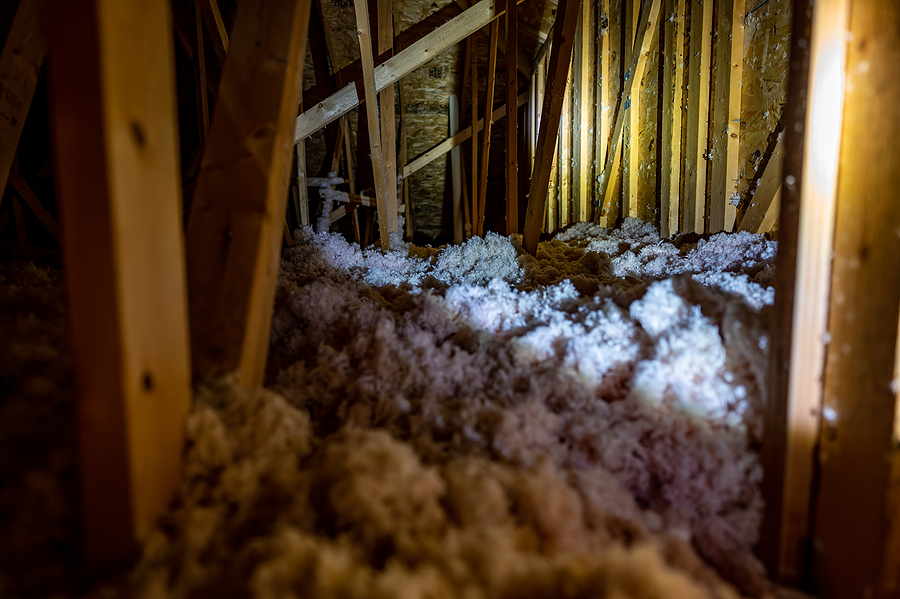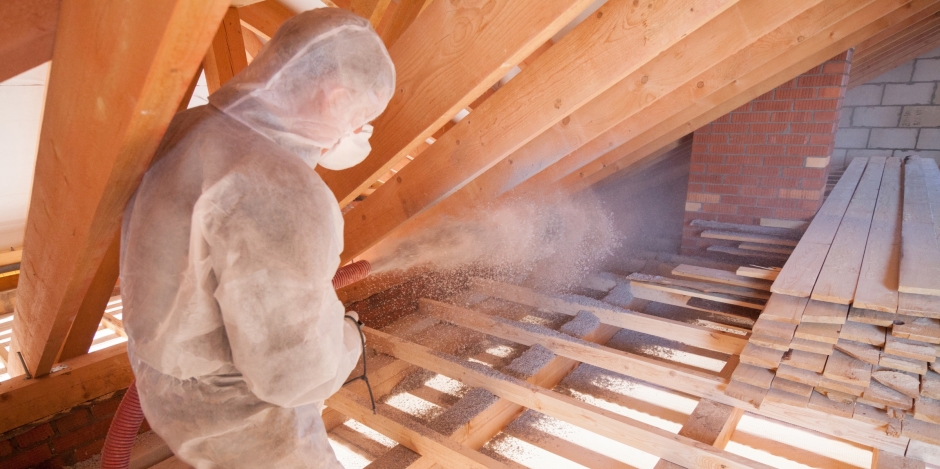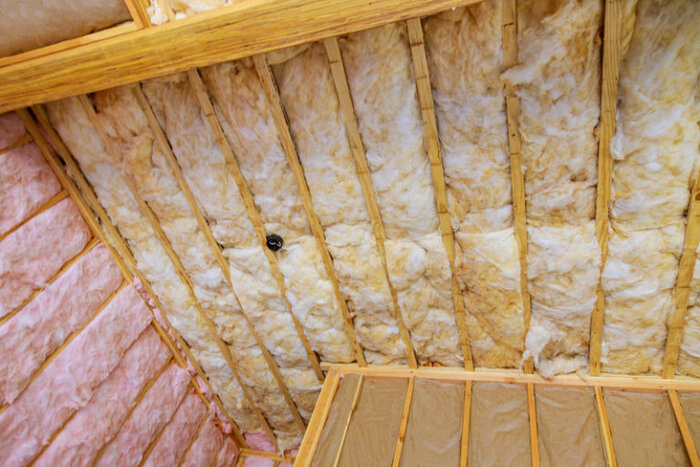Discover the Various Kinds Of Attic Insulation and Their Special Benefits for Your Home's Power Performance

Fiberglass Insulation
Fiberglass insulation is among one of the most frequently used materials for attic insulation because of its outstanding thermal performance and cost-effectiveness. Made up of small glass fibers, this material properly traps air, developing a shielding obstacle that aids keep regular interior temperature levels. Its high R-value per inch makes it specifically efficient at resisting warm transfer, which is vital for power conservation in homes.
Installment of fiberglass insulation is fairly uncomplicated, frequently available in batts or loose-fill types, accommodating different attic room configurations. Furthermore, it is immune and non-combustible to wetness, decreasing the threat of mold and mildew development. This longevity adds to its longevity, making fiberglass a sensible lasting financial investment for property owners.
Furthermore, fiberglass insulation is often made from recycled materials, which enhances its eco-friendliness. The material can additionally contribute to soundproofing, minimizing sound transfer in between rooms. While it is necessary to wear safety gear throughout setup to avoid irritation from the fibers, the total benefits of fiberglass insulation, including energy savings and environmental considerations, make it a prominent option for enhancing attic room performance and promoting a comfortable living environment.
Spray Foam Insulation
Spray foam insulation is a very efficient alternative for attic room insulation, known for its exceptional air securing and thermal efficiency. This innovative insulation product is composed of a blend of isocyanate and polyol material, which, when incorporated, expands quickly to load spaces and cavities in the attic room. Its capability to stick to different surface areas makes sure a continual barrier against air leaks, considerably minimizing warm loss during chillier months and warm gain during warmer seasons.
Among the crucial advantages of spray foam insulation is its high R-value per inch, which implies it provides exceptional thermal resistance in a reasonably slim application. This is particularly useful in attic rooms where space is usually restricted. Furthermore, spray foam can aid lessen dampness buildup, reducing the threat of mold and mildew and mold development, which can be harmful to both the framework and indoor air quality.
While the initial cost of spray foam insulation may be greater than typical alternatives, its long-term power cost savings, combined with raised comfort and enhanced home worth, make it a beneficial investment for house owners seeking improved power performance. Attic Insulation DFW. On the whole, spray foam insulation attracts attention as a reliable service for enhancing attic room insulation
Cellulose Insulation

Cellulose insulation is a popular choice for attic room insulation, primarily made up of recycled paper items treated with fire resistants. This ecologically pleasant option is understood for its excellent thermal efficiency, properly minimizing warmth transfer in both summer and winter season. The thick make-up of cellulose permits it to load voids and voids in attic spaces, giving a seamless barrier against air leaks.
One of the significant benefits of cellulose insulation is its capability to resist mold and pests, owing to the fire retardant treatments utilized throughout manufacturing. Additionally, it flaunts a high R-value per inch, which converts into superior energy efficiency. Property owners can anticipate lower home heating Discover More Here and cooling costs as an outcome of enhanced insulation.
Installation is usually completed through blowing loose cellulose into the preferred location, enabling a reliable and quick procedure. This method likewise lessens interruption to the existing structure. In addition, cellulose insulation has a reasonably low ecological impact, as its production procedure makes use of recycled materials, adding to lasting building practices.
Rock Woollen Insulation
Among the various choices for attic insulation, rock wool, also called mineral woollen, stands out as a result of its excellent thermal and acoustic efficiency. Made from recycled or natural products, rock wool is created by thawing rock and rotating it right into fibers, resulting in a product that uses superb insulation buildings.
One of the significant advantages of rock wool insulation is its high R-value, which indicates its efficiency in standing up to warm circulation. This characteristic not just boosts energy performance yet additionally adds to keeping a comfy indoor temperature level year-round. In addition, rock woollen is inherently fire-resistant, making it a much safer alternative for homes as it can stand up to heats without melting or launching hazardous fumes.
Furthermore, rock woollen insulation stands out in soundproofing capacities, properly lowering sound transmission in between areas and from outside sources. This makes it a suitable selection for house owners looking for a tranquil living environment. Rock wool is moisture-resistant, aiding to protect against mold growth and maintaining the structural integrity of the attic area. Overall, rock woollen insulation gives an extensive remedy for improving energy effectiveness, safety, and convenience in household setups.
Radiant Barrier Insulation
Radiant barrier insulation functions as a reliable remedy for decreasing warm transfer in attics, go to my site particularly in warmer climates. This type of insulation works by showing induction heat far from living rooms, thus reducing the amount of warmth that enters a home throughout hot climate - Attic Insulation DFW. Typically composed of a highly reflective material, such as aluminum foil, radiant barriers are installed in attic rooms, dealing with the roof, where they can intercept inbound warm from the sunlight
The key benefit of radiant barrier insulation is its capability to reduced cooling costs. By reflecting warmth as opposed to absorbing it, radiant obstacles can help keep a much more secure interior temperature, minimizing the workload on air conditioning systems. This efficiency translates right into lower energy bills and boosted convenience for property owners.
Along with power cost savings, glowing obstacles can additionally add to enhanced interior air high quality. By decreasing heat accumulation, they help minimize moisture levels, which can protect against mold growth and improve overall air blood circulation. When installed properly, glowing obstacle insulation can be an important addition to any type of energy-efficient home, making it a worthwhile factor to consider for house owners aiming to boost their attic insulation strategy.
Conclusion
In conclusion, recognizing the numerous kinds of attic insulation-- fiberglass, spray foam, cellulose, rock woollen, and glowing barriers-- enables property owners to make educated choices regarding energy efficiency. By picking the appropriate insulation material, significant reductions in power costs can be attained, along with enhancements in interior convenience.

In conclusion, recognizing the numerous kinds of attic insulation-- fiberglass, spray foam, cellulose, rock woollen, and radiant obstacles-- enables property owners to make informed choices concerning power effectiveness.
Comments on “Why Attic Insulation DFW is Essential for Energy Efficiency in Dallas-Fort Worth”